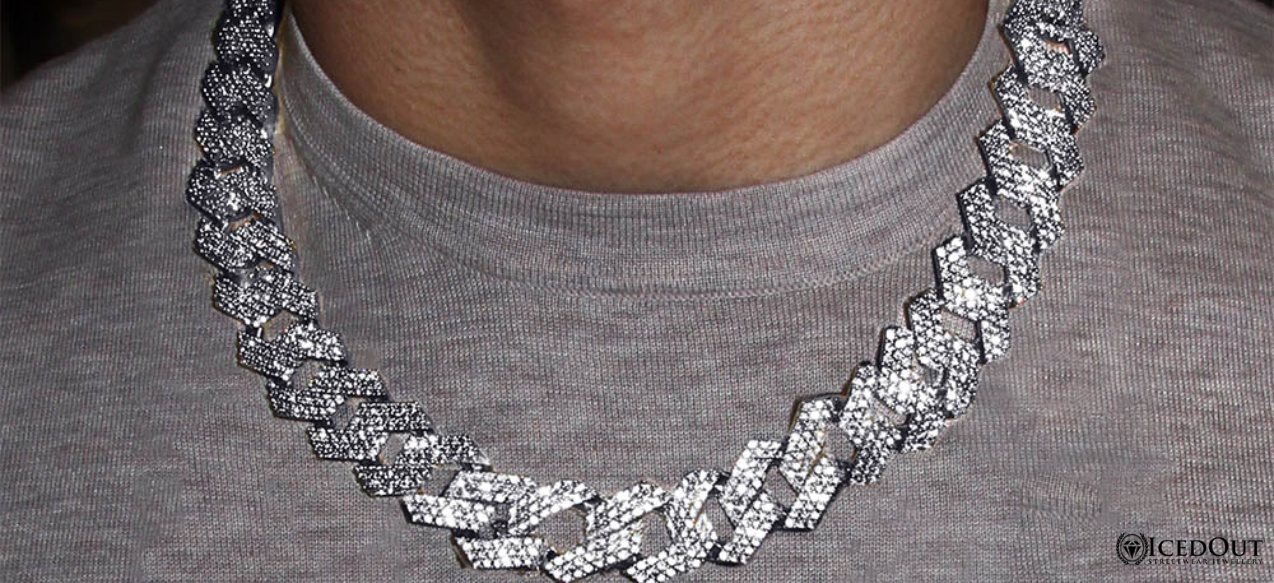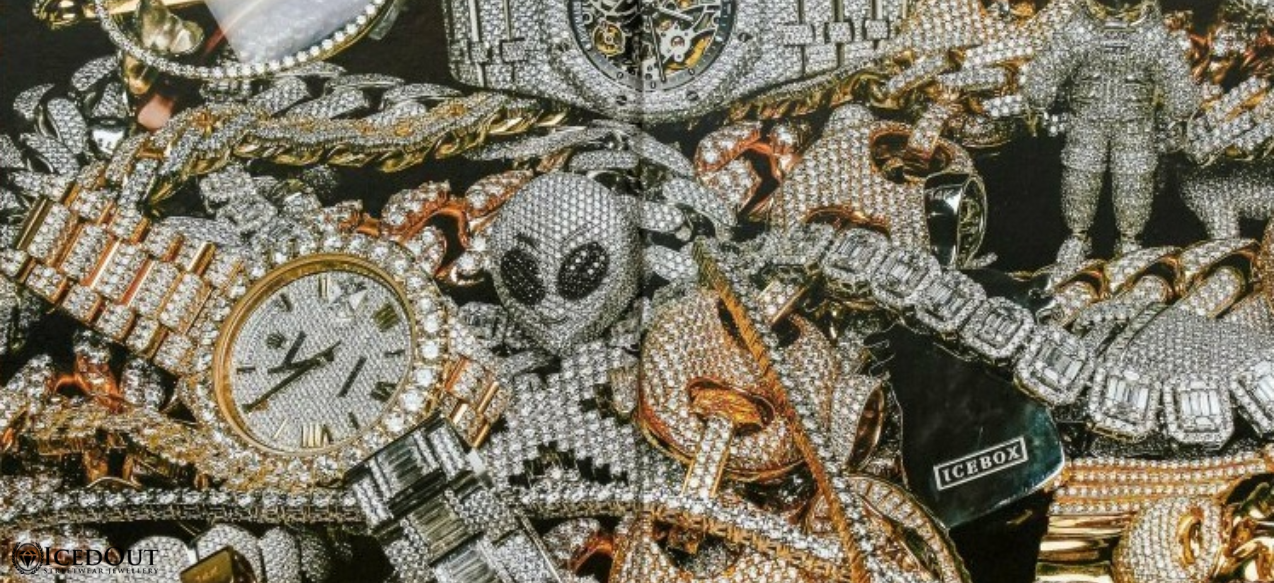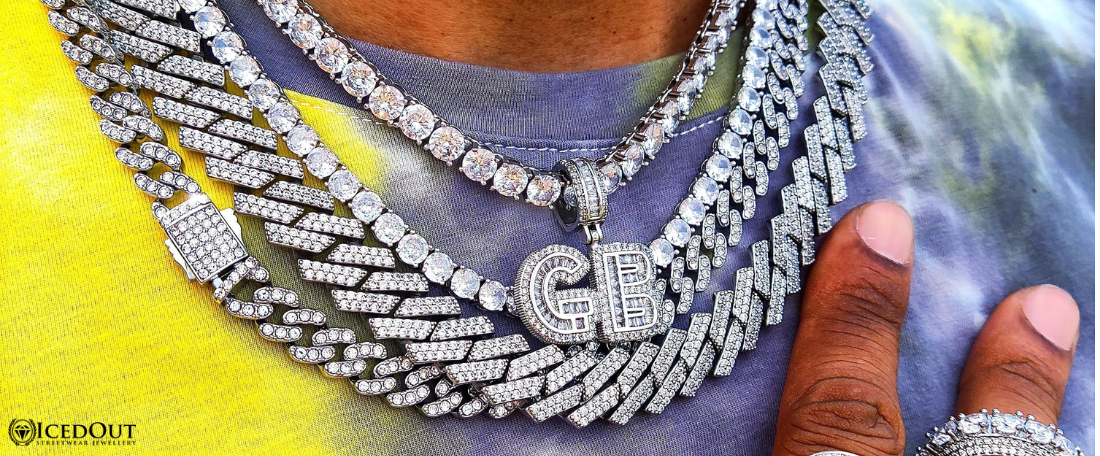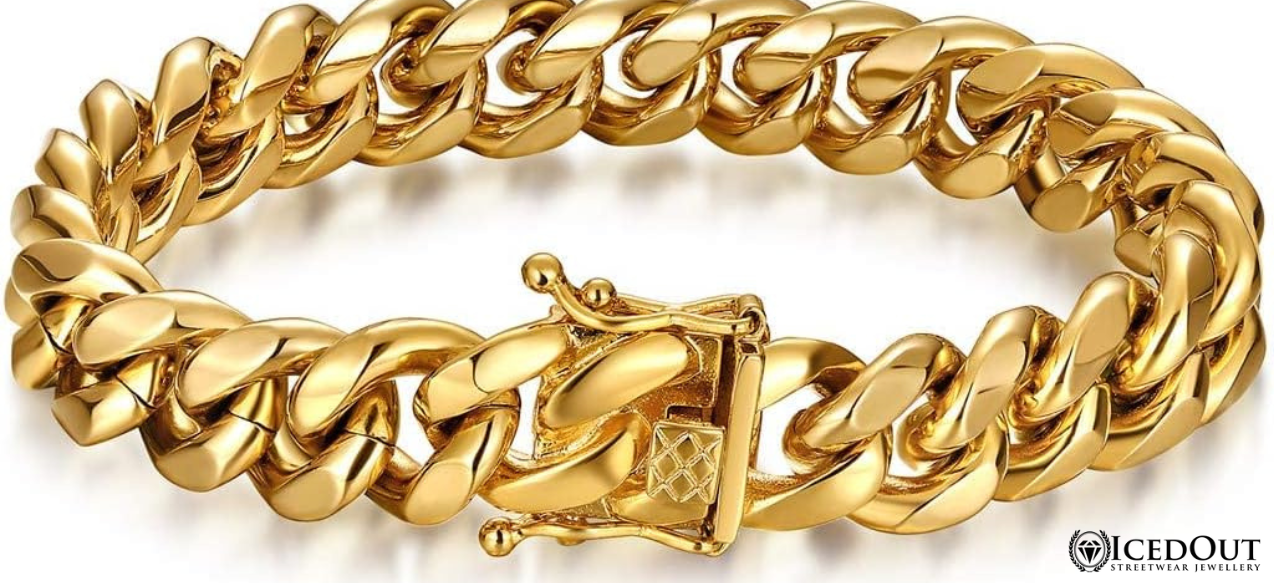From Streetwear to Luxury: The Evolution of Iced Out Fashion
October 17, 2025

Iced-out fashion—jewelry and accessories encrusted with stones that gleam conspicuously—has journeyed far beyond its origins. What started as a bold expression in underground culture has now been embraced by luxury brands, celebrities, and mainstream fashion. In this article, we’ll trace how iced-out style evolved from streetwear roots to high-end luxury, what drove that evolution, and what it means for fashion today.
Early Origins: Streetwear, Hip-Hop, and Bling Culture
-
1970s-1980s: Jewelry (large chains, gold, medallions) was already a symbol of status, especially in the Black community and in hip-hop culture. But as production techniques improved, flashy stones—rhinestones or cheaper crystal—started being used to create “bling” effects.
-
1990s: The term “iced-out” became more common. Influential hip-hop artists began wearing diamond or diamond-look jewelry—watches, pendants, chains—that visibly flashed in performances and videos. Jewelry makers like “Jacob the Jeweler” played big roles.
-
Customization emerged: artists wanted their chains or pendants to represent their identity (names, symbols, affiliations), pushing jewelry from off-the-shelf toward custom pieces.
Streetwear’s Rise & Democratization of Style
-
Streetwear as a concept was originally rooted in youth, skate, hip-hop, rave, punk and other subcultures. It valued authenticity, bold visuals (logos, graphics), comfort, and sometimes shock value.
-
As media (especially music videos, magazines, later online, then social media) amplified imagery of iced-out jewelry as symbols of success, younger audiences aspired to own similar pieces—even if scaled down in quality or price.
-
Brands outside the traditional luxury space (streetwear labels or even smaller jewelry designers) began producing iced-out designs using more accessible materials (cubic zirconia, less expensive metals). This widened the audience.
The Shift: Luxury Embraces Streetwear & Bling
-
Around the mid-2010s onward, luxury fashion houses started acknowledging streetwear’s influence. They saw how younger consumers valued displays of individuality, bling, and boldness.
-
Collaborations became key: streetwear brands partnering with luxury houses (e.g. Supreme x Louis Vuitton) merged the worlds. Streetwear designers like Virgil Abloh were appointed to luxury fashion roles, bringing through the design language of street culture.
-
Meanwhile, luxury brands themselves began producing more casual jewelry, more statement accessories iced watches, chains that historically had been part of street/hyped culture, now elevated through craftsmanship, materials, branding.
Material & Design Evolution
-
Stones and Materials: From rhinestones → cubic zirconia → moissanite → lab-grown or real diamonds. Metals moved from basic gold and silver plating toward higher karat gold, precious metal alloys, more refined settings.
-
Design styles: Early bulky, heavily iced pieces (big Cuban links, pendants, oversized “bling”) → more refined and subtle iced pieces too (tennis bracelets, dainty chains, layering). There’s also more customization: colors, motifs, mixing minimalism with maximalism.
-
Craftsmanship & branding: Luxury brands bring in higher quality control, better setting of stones, often ethical sourcing. The packaging, branding, storytelling around these pieces also gets richer. The line between jewelry as “fashion accessory” vs “fine jewelry” is becoming more blurred.
Social Media, Celebrity & the Hype Machine
-
Celebrities, musicians, athletes have long been wearing iced-out pieces, and the media amplified that. But Instagram, TikTok, etc., make it even more visible. A single video or post can send a style viral.
-
Limited drops, scarcity, hype culture: streetwear-style release strategies adopted by jewelry brands too (limited editions, collaboration pieces) to drive desire.
-
Gen Z and Millennials value both visual-impact and status but also authenticity. Wearing something iced-out signals success, style confidence, but also identity. Because of social media, the audience is global—what someone in LA does or wears can influence someone in Tokyo or Mumbai.
Luxury Solidifies the Trend & What It Means Now
-
Luxury fashion houses are not just “borrowing” streetwear; they are integrating it into core business strategies. More high-end lines with bold jewelry, bigger bling, yet paired with premium craftsmanship and brand heritage.
-
There’s also a move toward premiumization (making iced-out jewelry that lasts, uses better materials, better mechanisms), and ethical concerns (responsible sourcing, sustainability, even lab-grown stones).
-
The customer base is broader: people who want the luxe look without extreme price tags; also consumers who can afford high end and want exclusivity and craftsmanship.
-
Fashion’s calendar and norms have shifted: drops, capsules, collaborations, hype, social media announcements are now standard. Iced-out pieces are part of everyday wear—not just special events.
Challenges & Future Directions
-
Over saturation & “bling fatigue”: If everything becomes ice-out, uniqueness suffers. Some consumers may turn to subtler styles or more personalized customization.
-
Quality vs Appearance: Pieces that look icy but use poor quality materials wear out, lose shine, break, etc. Brand reputation depends increasingly on durability and after-care.
-
Authenticity and ethics: Consumers demand transparency (e.g. origin of stones, materials, labor practices).
-
Innovation: New materials, tech (e.g. 3D printing, new gemstones, smart jewelry) could shift what “iced-out” means. Also regional influences (Asia, Middle East, Africa) will bring new motifs and aesthetics.
Conclusion
Iced-out fashion has evolved from being an overt symbol of street culture and status to a fully normalized and celebrated part of luxury fashion. It is no longer just about being flashy—it’s about craftsmanship, identity, storytelling, and balancing boldness with refinement. As long as culture, media, and consumer taste continue changing, iced-out fashion will keep evolving.






